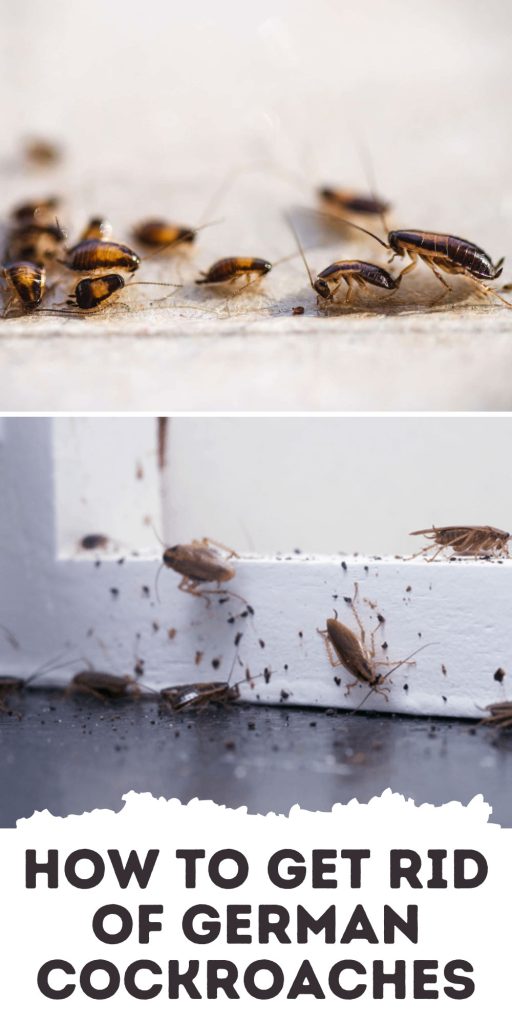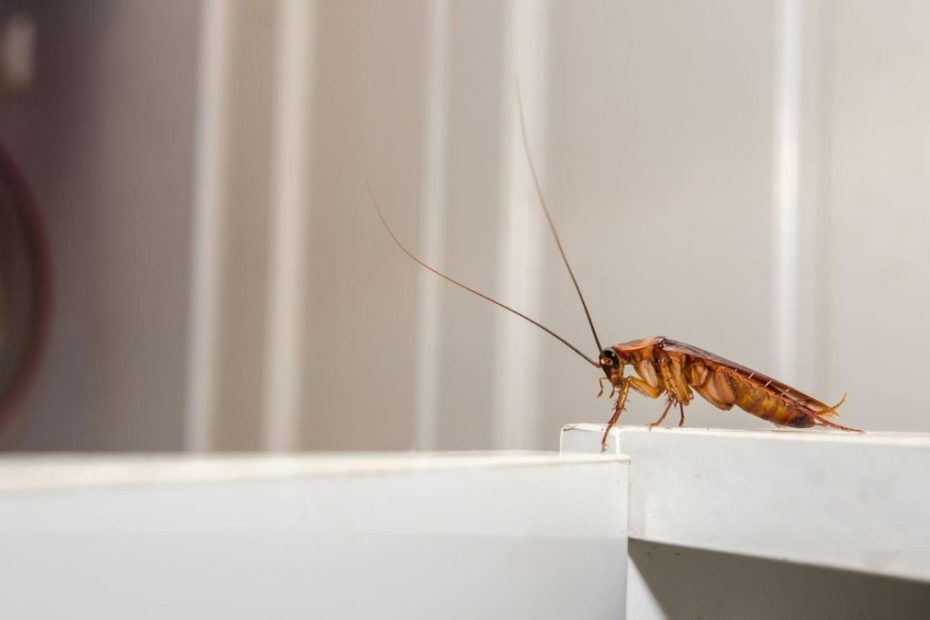Finding German cockroaches in your home can be a nightmare. These resilient pests are not just unsightly; they can also pose serious health risks due to the bacteria they carry. If you’ve noticed these unwelcome guests scurrying around, it’s crucial to act quickly.
You might feel overwhelmed, but don’t worry. There are effective strategies to eliminate German cockroaches and prevent them from returning. In this guide, you’ll learn practical tips and proven methods to reclaim your space and keep it roach-free.
Key Takeaways
- Identify Appearance and Habits: Understanding the physical characteristics and behaviors of German cockroaches, such as their distinct stripes and nocturnal activity, is critical for effective control.
- Recognize Infestation Signs: Look for key indicators like live sightings, droppings resembling coffee grounds, musty odors, and egg cases to detect infestations early.
- Maintain Cleanliness: Employ daily, weekly, and monthly cleaning routines to eliminate food and water sources, reducing the likelihood of infestations.
- Seal Entry Points: Prevent access by sealing cracks, using door sweeps, and screening vents and utility openings to block cockroach entry.
- Implement Effective Extermination: Use a combination of chemical treatments, natural remedies, and, if necessary, professional pest control services to eradicate infestations.
- Post-Infestation Practices: Continue regular cleaning, monitor with traps, and remove egg cases to maintain a cockroach-free environment and prevent reinfestation.

Understanding German Cockroaches
German cockroaches are a common household pest known for their resilience and rapid reproduction. Recognizing these insects and understanding their behavior is crucial for effective eradication.
Key Characteristics
German cockroaches can be identified by their distinct physical features and behaviors.
- Appearance: Light brown to tan with two dark, parallel stripes on their pronotum (the area just behind the head).
- Size: Adults measure about 0.5 to 0.6 inches in length.
- Lifecycle: They have three life stages—egg, nymph, and adult. A single female can produce up to 300 offspring in her lifetime.
- Habitat: Prefers warm, humid areas like kitchens and bathrooms. They are often found in cracks and crevices close to food and water sources.
Behavior and Habits
German cockroaches exhibit specific behaviors that make them challenging to control.
- Nocturnal Activity: They are most active at night, scavenging for food and water.
- Rapid Reproduction: A female can produce a new generation every 60 days under optimal conditions.
- Feeding Habits: Omnivorous; they consume anything from crumbs to soap and toothpaste.
Health Risks
These pests can pose several health risks due to their habits and lifecycle.
- Disease Transmission: They carry bacteria like E. coli and Salmonella, leading to foodborne illnesses.
- Allergens: Their shed skins, droppings, and dead bodies can trigger allergies and asthma, particularly in children.
- Contamination: They can contaminate anything they touch, degrading food quality and sanitation.
Summary
Understanding key traits and behaviors of German cockroaches helps you choose the right control methods. Look for their appearance, monitor nocturnal activity, and be aware of their rapid reproduction to manage infestations effectively. Addressing these factors can mitigate health risks and maintain a cleaner, safer home environment.
Common Signs of Infestation
Identifying the signs of a German cockroach infestation helps you take swift action before the situation worsens. If present, German cockroaches leave several telltale indicators.
Physical Sightings
Physically spotting German cockroaches is a primary sign of infestation. These pests are typically light brown to tan with two parallel dark stripes on their backs.
- Sightings
- Cockroaches are often seen in kitchens, bathrooms, and other warm, humid areas.
- They’re nocturnal, so seeing them during the day suggests a larger infestation.
- Dead Cockroaches
- Finding dead cockroaches is a common sign that more may be hiding.
- Dead bodies are usually found near food sources.
Droppings and Secretions
Droppings and secretions are also significant indicators of an infestation. Understanding what to look for can help you identify their presence quickly.
- Droppings
- Resemble pepper, coffee grounds, or dark specks.
- Found in areas where they’ve been active, including kitchen counters, drawers, and under appliances.
- Secretions
- Produce a musty, oily odor that can permeate infested areas.
Egg Cases
German cockroach egg cases, or oothecae, provide clear evidence of an active infestation.
- Appearance
- Light brown and capsule-shaped, about 1/4 inch long.
- Locations
- Often found in hidden places like behind appliances, within cracks, or in cabinet corners.
- Each egg case contains multiple eggs, contributing to rapid population growth.
Regularly checking for these common signs increases your chances of early detection, allowing you to carry out control measures effectively.
Effective Prevention Methods
When battling German cockroaches, employing effective prevention methods can significantly reduce the risk of an infestation. Here, you’ll find detailed strategies to keep your home cockroach-free.
Sanitation Practices
Maintaining a clean environment is crucial for preventing German cockroach infestations. Regularly cleaning and minimizing food sources can help keep these pests at bay.
- Daily Cleaning:
- Wipe down kitchen counters, stovetops, and dining areas to remove food residues.
- Sweep and mop floors to eliminate crumbs and spills.
- Empty trash cans frequently and use sealed containers for waste storage.
- Proper Food Storage:
- Store food in airtight containers to prevent easy access.
- Keep fruits and vegetables in the refrigerator if possible.
- Eliminating Water Sources:
- Fix leaky faucets and pipes promptly.
- Avoid leaving standing water in sinks and pet bowls overnight.
Sealing Entry Points
Preventing German cockroaches from entering your home involves sealing potential entry points. Inspect and secure vulnerable areas to create barriers against these pests.
- Inspect and Seal Cracks:
- Check for and seal gaps around windows and doors.
- Use caulk or weatherstripping to close off any openings in walls or foundations.
- Screen Vents and Openings:
- Install mesh screens over vents and floor drains.
- Ensure utility openings are properly sealed.
- Use Door Sweeps:
- Apply door sweeps to exterior doors to prevent cockroaches from entering underneath.
Keeping up with these sanitation practices and sealing entry points can help maintain a cockroach-free home. Frequent monitoring and consistent efforts increase the effectiveness of these prevention methods.
Extermination Techniques
German cockroaches can be particularly stubborn pests. Knowing the right extermination techniques ensures effective control and long-term prevention.
Chemical Treatments
Chemical treatments are often used against German cockroaches due to their efficacy. These include insecticidal sprays, baits, and dusts.
- Insecticidal Sprays: These sprays contain active ingredients, like pyrethroids, which quickly kill cockroaches upon contact. Apply these sprays in areas where roaches are active.
- Baits: Cockroach baits, containing insecticides such as fipronil or hydramethylnon, attract and poison the pests. Place these baits in strategic locations, such as under sinks and behind appliances.
- Dusts: Insecticidal dusts, such as diatomaceous earth and boric acid, damage the exoskeleton of cockroaches. Apply dusts in cracks, crevices, and other hiding spots.
Natural Remedies
While chemical treatments are effective, natural remedies offer a safer alternative, especially in homes with children and pets.
- Baking Soda and Sugar: Mix equal parts baking soda and sugar, then place the mixture near entry points. The sugar attracts cockroaches, while the baking soda kills them.
- Essential Oils: Oils like peppermint and eucalyptus act as natural repellents. Sprinkle a few drops around problem areas to deter cockroach activity.
- Diatomaceous Earth: This natural powder, made from fossilized algae, dehydrates and kills cockroaches. Use it in hard-to-reach places where roaches nest.
Professional Pest Control
For severe infestations or when DIY methods fail, seeking professional pest control is the next logical step.
- Inspection: Pest control professionals conduct thorough inspections to identify the extent of the infestation and the primary nesting areas.
- Treatment Plans: Based on the inspection, they create tailored treatment plans using advanced techniques, such as gel baits or high-impact insecticides.
- Follow-Up: Regular follow-up visits ensure that the infestation is fully eradicated and prevent future recurrence.
Addressing German cockroach infestations demands a mix of approaches. By combining chemical treatments, natural remedies, and professional services, you can effectively eliminate these resilient pests and protect your home.
Post-Infestation Maintenance
After eradicating German cockroaches from your home, implementing post-infestation maintenance is crucial to prevent their return. Employ consistent practices to maintain hygiene and keep these pests at bay.
Regular Cleaning
Focus on maintaining a clean environment, as German cockroaches thrive in dirty, cluttered spaces.
- Daily Tasks: Wipe down kitchen counters, sweep floors, and wash dishes immediately. Clean food spills in high-traffic areas.
- Weekly Tasks: Vacuum carpets, mop floors, and empty trash bins. Pay extra attention to crevices and hidden spots where crumbs might gather.
- Monthly Tasks: Deep clean appliances like ovens and refrigerators. Scrub under sinks and behind large appliances.
Monitoring and Trapping
Continuous monitoring helps catch potential infestations early. Use traps to gauge cockroach activity and intervene as needed.
- Sticky Traps: Place in corners, behind appliances, and near water sources. Regularly check and replace them, recording any catches.
- Glue Boards: Useful for dark, damp areas like basements and attics. Assess and document captures to adjust your control strategy.
- Egg Case Collection: Inspect for and remove egg cases (oothecae) from hidden areas. Dispose of them to prevent further hatching.
By incorporating these practices, you ensure a clean, pest-free environment, making it difficult for German cockroaches to reinfest your home.
Conclusion
Dealing with German cockroaches can be daunting but with the right knowledge and approach you can reclaim your home. Swift action paired with effective strategies will help you eliminate these resilient pests. By understanding their habits and implementing thorough cleaning and prevention methods you can significantly reduce the chances of an infestation. Regular monitoring and maintenance are crucial to keeping your home roach-free.
Whether you choose chemical treatments, natural remedies, or professional services, consistency is key. Stay vigilant and proactive to ensure a cleaner, safer living environment. Your efforts will pay off in maintaining a pest-free home.
Frequently Asked Questions
What are the common signs of a German cockroach infestation?
Physical sightings of cockroaches, especially in kitchens and bathrooms, are indicators. Other signs include finding dead cockroaches, droppings resembling pepper or coffee grounds, musty odors from secretions, and light brown, capsule-shaped egg cases.
How can I prevent German cockroaches from entering my home?
Maintain cleanliness by daily cleaning, proper food storage, and eliminating water sources. Seal entry points with caulk, weatherstripping, mesh screens, and door sweeps. Consistent efforts and frequent monitoring can effectively prevent infestations.
What health risks do German cockroaches pose?
German cockroaches can transmit diseases, cause allergic reactions, and contaminate food and surfaces with bacteria. Their presence can significantly affect indoor hygiene and health, making swift action essential.
What chemical treatments are effective for German cockroach control?
Insecticidal sprays, baits, and dusts are common and effective chemical treatments. They target cockroaches through direct contact or ingestion, reducing the infestation over time.
Are there natural remedies for eliminating German cockroaches?
Yes, natural remedies include using baking soda and sugar mixtures, essential oils, and diatomaceous earth. These methods are safer alternatives, particularly in homes with children and pets.
When should I seek professional pest control services?
Consider professional pest control services for severe infestations or if DIY methods fail. Professionals offer thorough inspections, tailored treatment plans, and regular follow-up visits to ensure effective control.
How do I maintain a roach-free home post-infestation?
Practice consistent cleaning, including daily, weekly, and monthly tasks. Use monitoring and trapping methods like sticky traps and glue boards to detect and address potential infestations early, ensuring a hygienic environment.
